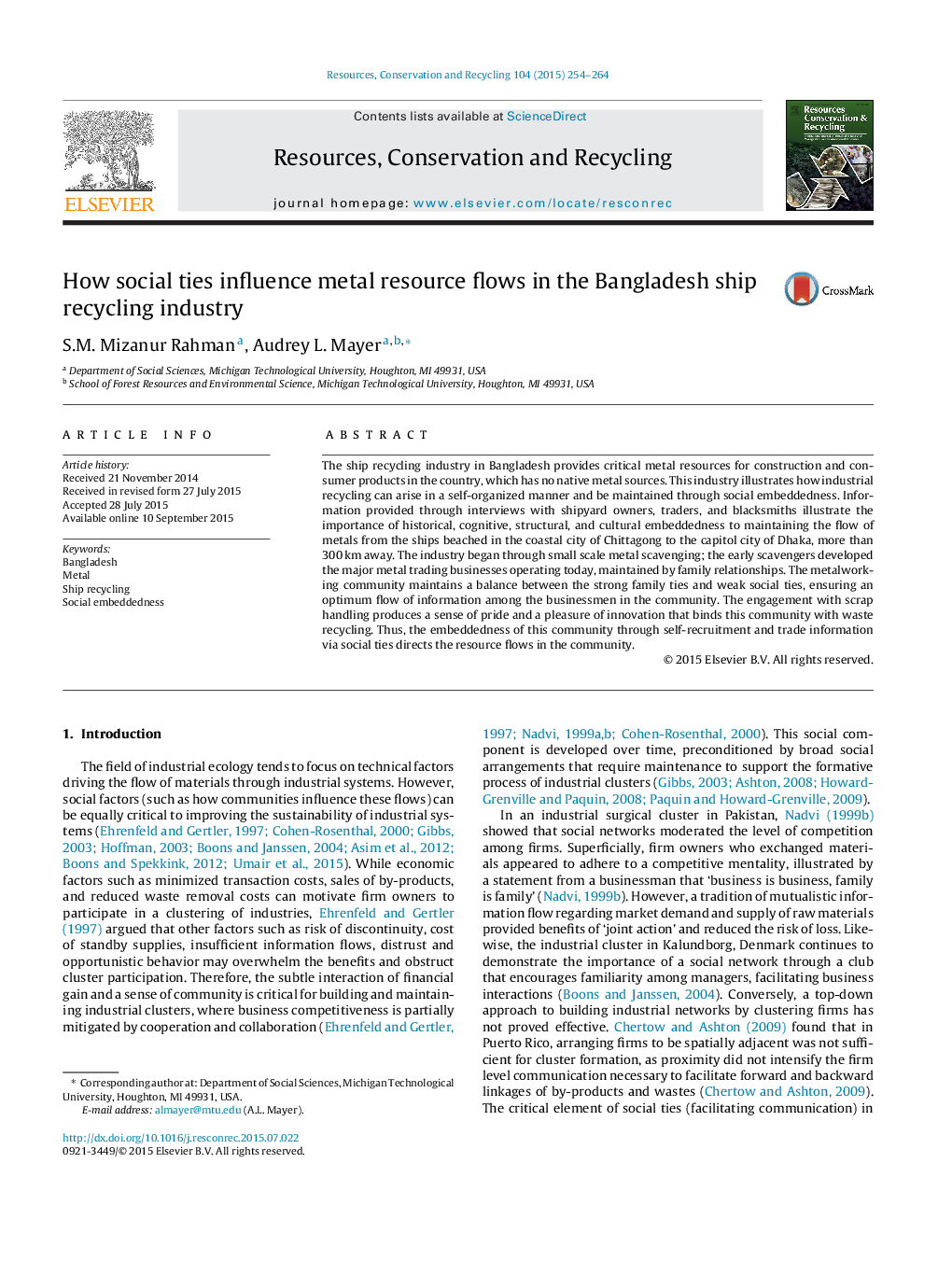| کد مقاله | کد نشریه | سال انتشار | مقاله انگلیسی | نسخه تمام متن |
|---|---|---|---|---|
| 1062827 | 948179 | 2015 | 11 صفحه PDF | دانلود رایگان |
• Ship recycling provides local and global services for metal resource recycling.
• Metal resource flows in Bangladesh are driven by social networks.
• Successful industrial recycling clusters use social embeddedness to maintain resource flows.
The ship recycling industry in Bangladesh provides critical metal resources for construction and consumer products in the country, which has no native metal sources. This industry illustrates how industrial recycling can arise in a self-organized manner and be maintained through social embeddedness. Information provided through interviews with shipyard owners, traders, and blacksmiths illustrate the importance of historical, cognitive, structural, and cultural embeddedness to maintaining the flow of metals from the ships beached in the coastal city of Chittagong to the capitol city of Dhaka, more than 300 km away. The industry began through small scale metal scavenging; the early scavengers developed the major metal trading businesses operating today, maintained by family relationships. The metalworking community maintains a balance between the strong family ties and weak social ties, ensuring an optimum flow of information among the businessmen in the community. The engagement with scrap handling produces a sense of pride and a pleasure of innovation that binds this community with waste recycling. Thus, the embeddedness of this community through self-recruitment and trade information via social ties directs the resource flows in the community.
Journal: Resources, Conservation and Recycling - Volume 104, Part A, November 2015, Pages 254–264
